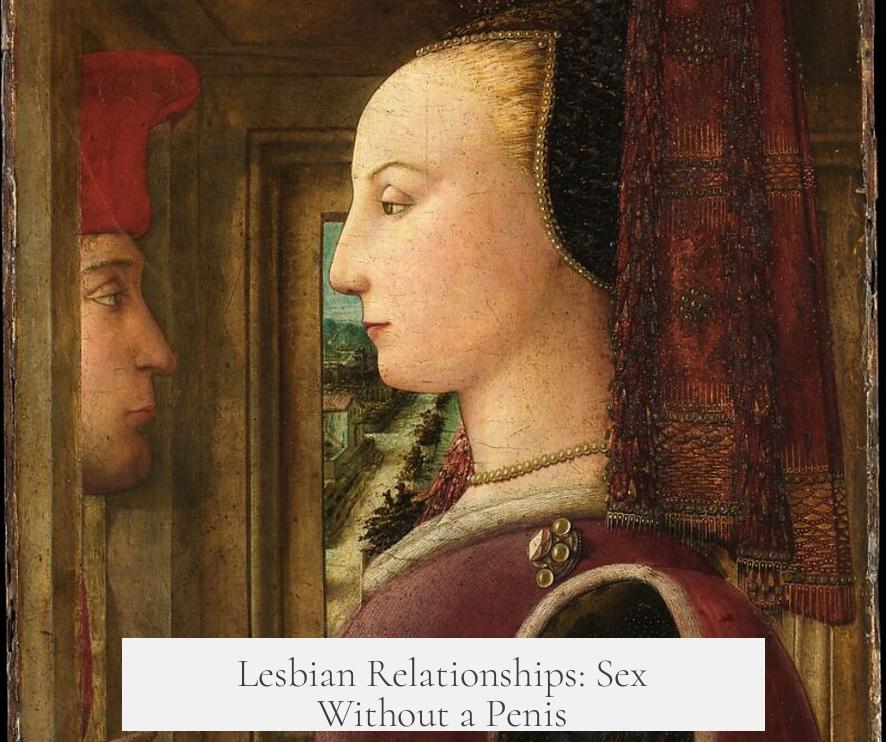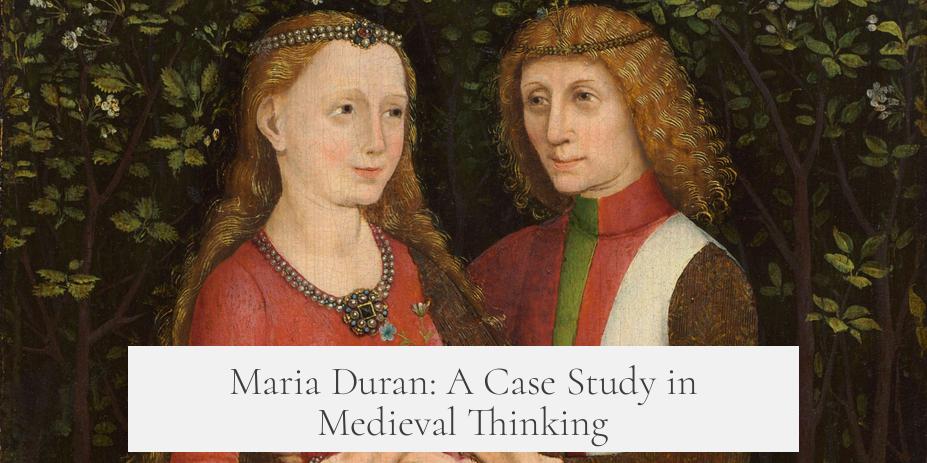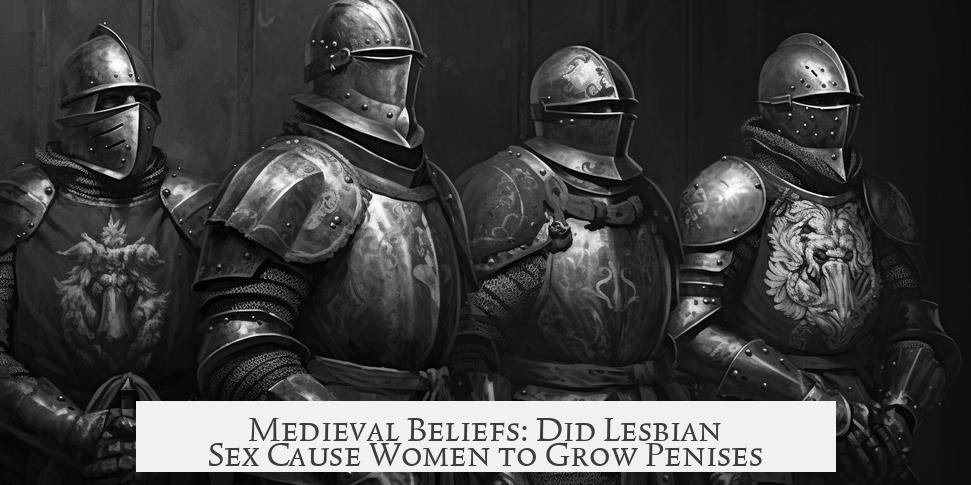People in medieval Europe did not believe that women having sex with other women would cause them to grow a penis; rather, the belief was that a penis was necessary for sexual intercourse to occur, which led to complex debates about lesbian relationships and penetration.
In medieval Europe, sex was defined specifically as an act involving a penis and penetration. This understanding stemmed from a combination of Aristotelian and Galenic medical theories, as well as Biblical law. Sexual relations without a penis did not qualify as “sex” in the accepted sense.
Lesbian relationships posed a particular challenge. Since no penis was involved, medieval authorities questioned whether sex had even taken place. Ultimately, they did not classify lesbian acts as sodomy or illicit sex. Instead, such relationships were often prosecuted as crimes of “scandal,” illicit desire, or lust, but not on the grounds of illegal sex.
Problems intensified when witnesses or victims claimed penetration occurred in female-to-female encounters. This claim forced inquisitors and theologians to revisit ancient medical and philosophical theories to explain how penetration might be possible without a penis.
This is where the “single sex theory” came into play. Rooted in Aristotelian and Galenic ideas, this theory argued that men and women shared a common sexual anatomy, with the penis and vagina essentially being the same organ, differing only in form. The vagina was seen as an “inside out” penis.
The theory proposed that though women did not normally have an external penis, under certain conditions, their vagina could transform and protrude, effectively becoming a penis. This change could occur due to an alteration in bodily humors, a rise in internal body temperature, or an imbalance of the body’s natural state.
Three broad causes were considered for a woman growing a penis: naturally occurring “masculine” traits, circumstantial and natural humoral imbalances, or supernatural intervention such as demonic influence. This created a contentious line between medical explanation and demonology.
Once inquisitors accepted the possibility that a woman could grow a penis, questions arose about whether this was natural or supernatural. If supernatural, it suggested witchcraft or a pact with the devil. This duality complicated legal and religious responses to accused women.
A notable case that illustrates these issues is that of Maria Duran, a woman tried by the Inquisition in eighteenth-century Portugal. Historian François Soyer details this trial in his studies, highlighting victims’ claims of penetration and the medical examinations carried out to determine Maria’s natural sexual organs. This trial exemplifies how medieval and early modern authorities grappled with the intersection of gender, sexuality, and the physical body.
In summary, the belief was never that lesbian relations caused women to grow penises. Instead, the existence of a penis was viewed as a prerequisite to classify an act as sex. Without penetration by a penis, female sexual acts were often legally invisible or classified under different categories.
| Topic | Medieval Belief |
|---|---|
| Sex Definition | Requires penis and penetration |
| Lesbian Relationships | Considered desire, not sex |
| Penetration Claims | Explained by single sex theory |
| Single Sex Theory | Penis & vagina are one organ, inside vs outside |
| Penis Growth Causes | Humoral imbalance, natural masculinity, or supernatural forces |
| Legal Implications | Debate between medicine & demonology |
| Case Study | Maria Duran’s trial and medical examinations |
- Medieval sex required penis plus penetration for legal and moral recognition.
- Lesbian acts lacked a penis, so often not recognized as sex but as scandal or lust.
- Single sex theory argued vagina could turn into a penis under certain conditions.
- Penis growth could arise through natural imbalances or demonic intervention.
- Maria Duran’s Inquisition trial exemplifies these medieval concerns and procedures.
Did people in medieval Europe believe that women having sex with other women would cause them to grow a penis?

In medieval Europe, the core belief wasn’t that women having sex with other women would cause them to grow a penis. Rather, the idea was quite the opposite: for any act to be considered “sex,” a penis had to be involved. In other words, a penis needed to exist—either naturally or by some unusual means—for lesbian sex to even be acknowledged as sex.
Let’s untangle this curious medieval mindset and why such an idea took hold. Spoiler alert: it’s a heady mix of ancient philosophy, legal codes, and religious laws. And yes, some wild accusations, medical debates, and inquisitions sprinkled in for flavor.
A Medieval Definition of Sex: Penetration is King
In today’s terms, defining “sex” feels pretty straightforward, right? But in the medieval world, it was a lot simpler—and also a lot more rigid. They insisted that for an act to qualify as sex, there had to be a penis penetrating something. If there’s no penis, there’s no sex. Simple as that.
This wasn’t pulled out of thin air. Ideas from ancient Greek philosophers like Aristotle and medical thinkers like Galen shaped this belief. Their model of human biology insisted that the penis and vagina were complementary parts of a sexual act. Penetration was the linchpin.
On top of that, biblical law across medieval Europe reinforced this. It tied sin and crime closely to penetrative acts. So, women having physical relations without penetration simply didn’t meet the criteria of “sex,” at least in the eyes of the law and theology.
The Legal Landscape: Sodomy Laws and Same-Sex Relations
When it came to male same-sex relations, medieval law was complex. A man could identify, in today’s terms, as homosexual without breaking the law. The real offense came with physical acts—especially penetrative ones.
Law enforcement focused intently on whether the act was “inside the vase” or “outside the vase.” Yes, ‘vase’ here is a euphemism for the anus. If it was just touching or rubbing outside, that might be lust or scandal but not outright “sodomy.” Actual anal penetration was the red line.
Male-female anal sex also counted as sodomy and thus was criminalized. So, penetration defined crime here, too. The presence or absence of a penis in a particular place mattered legally in a way we often overlook today.
Lesbian Relationships: Sex Without a Penis?

Now, here’s where things get especially tangled. Since medieval definitions hinged on penetration by a penis, lesbian relations presented a conundrum: no penis, no penetration, no sex. Therefore, no sodomy in their legalistic framework.
This resulted in lesbian relationships being mostly persecuted not for “sex crimes” but for scandal, lust, or illicit desire. The very lack of a penis ensured they avoided the harshest legal punishments meted out for sodomy.
But what if witnesses claimed penetration happened? This happened in trials, and victims or accusers sometimes insisted that penetration was involved. This challenged the rigid definition.
The Single Sex Theory and The Birth of the “Vagina-Penis” Concept
To deal with such claims, inquisitors turned back to ancient medicine and philosophy. Remember Aristotle and Galen? They leaned on the “single sex theory,” a belief that men and women were more similar than different. The penis and vagina, for them, were essentially the same organ—but turned inside out.
Under this framework, a woman’s body contained the necessary components to create a penis. It was just usually internal or “turned inward.” But, when certain conditions disturbed her body’s balance, this internal organ could turn outward and become a penis.
This explained how a woman might have “penetrative sex” with another woman by literally growing a penis-like organ. They thought certain “masculine” women or women with a humoral imbalance could undergo this transformation.
Natural and Supernatural Causes: Medicine Meets Demonology
Medieval medicine suggested natural origins for such changes—a rise in body heat or humoral imbalance causing this “growth.” Yet, religion and demonology had a say, too.
If a woman did grow a penis, was it natural, or was the devil involved? This sparked heated debates among inquisitors. Was this a sign of witchcraft? Had the woman made a pact with demons to gain such an organ?
Medical examinations became common in trials, hunting for anatomical proof of these claims. The infamous case of Maria Duran, a cross-dressing woman on trial in eighteenth-century Portugal, highlights these issues perfectly.
Maria Duran: A Case Study in Medieval Thinking

Historian François Soyer’s work on Maria Duran dives deep into these ideas. Accused of lesbian relations and cross-dressing, Maria’s victims claimed penetration. This forced inquisitors to medically examine her anatomy.
The trial exemplifies the intersection of sexual norms, legal scrutiny, and medical investigation. It reveals how serious medieval institutions took the question of whether a woman could “grow a penis” and how this tied to accusations of lesbian sex.
So, Did People Believe Women Would Grow Penises From Lesbian Sex?
Back to our original question: no, the dominant medieval belief was not that women would start growing penises because of having sex with other women.
Instead, they argued that for lesbian sex to even exist, a woman would have to grow a penis first—either naturally (due to humoral imbalance or “masculine” traits) or supernaturally (witchcraft). Without that, there could be no penetration, thus no sex.
In a nutshell: the penis was the gatekeeper of “real” sex. If there was no penis, no sex. If someone claimed lesbian sex involved penetration, some kind of “penis” had to be there, or else the claim wasn’t valid.
What Can We Learn From This Medieval Puzzle?
This entire medieval perspective reveals how deeply cultural ideas influence legal and medical frameworks. It also underscores the limits of human imagination caught in its historical moment.
Modern science and definitions of sex and gender have thankfully moved far beyond this narrow view. Yet, the medieval story reminds us how societies have long struggled to categorize human relations that don’t fit neatly into their boxes.
Ever wondered how medieval folks would react to today’s conversations around gender fluidity and sexuality? Their insistence on the penis as central to sex shows just how far we’ve come—and maybe how rigid old frameworks can be.
So, the next time you hear a bizarre medieval rumor, remember: it’s not about women turning into men during lesbian sex, but about how the presence of a penis was essential for defining sex at all. That’s the real medieval truth!




